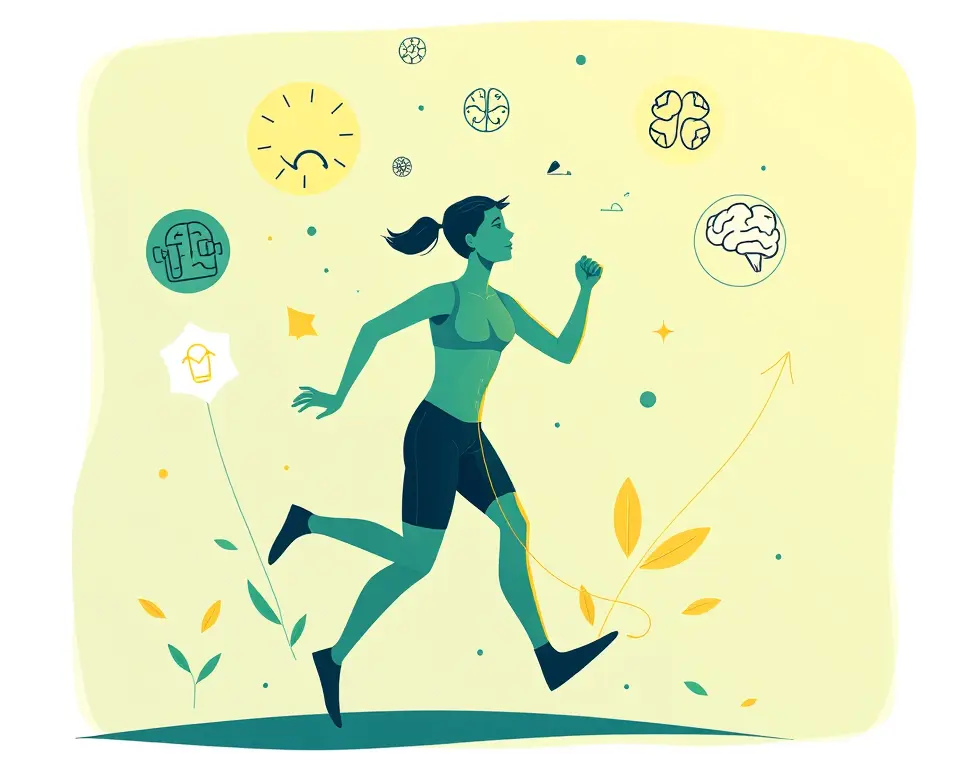Regular exercise and physical activity are cornerstones of a healthy lifestyle. Beyond just maintaining a trim physique, engaging in consistent physical activity offers a wealth of benefits that extend to nearly every aspect of your well-being. From preventing chronic diseases to boosting your mood and enhancing cognitive function, the power of exercise is undeniable.
The Physical Perks: Fortifying Your Body
The impact of exercise on your physical health is profound. Regular physical activity strengthens your body from the inside out, reducing the risk of developing numerous health problems.
Cardiovascular Health: A Stronger Heart
Exercise is a powerful tool in the fight against cardiovascular disease, a leading cause of death globally. Regular physical activity strengthens the heart muscle, improves blood circulation, and lowers blood pressure. This potent combination reduces the risk of heart disease, stroke, and other cardiovascular ailments.
Weight Management: Achieving a Healthy Balance
Maintaining a healthy weight is crucial for overall well-being. Exercise helps you burn calories, increase muscle mass, and boost your metabolism. This creates a calorie deficit, leading to weight loss or maintenance of a healthy weight. Combining exercise with a balanced diet is the most effective way to manage your weight.
Diabetes Prevention: Regulating Blood Sugar
Type 2 diabetes is a growing global concern, but exercise can play a significant role in prevention and management. Physical activity improves your body’s sensitivity to insulin, helping to regulate blood sugar levels. Regular exercise can significantly reduce the risk of developing type 2 diabetes, and for those already diagnosed, it can help manage the condition effectively.
Bone and Muscle Strength: Building a Resilient Body
As we age, maintaining bone and muscle strength becomes increasingly important. Exercise, particularly weight-bearing exercises, stimulates bone growth and increases bone density, reducing the risk of osteoporosis. Additionally, physical activity strengthens muscles, improving balance, coordination, and overall physical function.
Mental and Emotional Well-being: Exercise for a Healthier Mind
The benefits of exercise extend far beyond the physical realm. Regular physical activity has a profound impact on your mental and emotional well-being, acting as a natural mood booster and stress reliever.
Mood Enhancement: A Natural Antidepressant
Exercise stimulates the release of endorphins, which have mood-boosting effects. These neurochemicals act as natural pain relievers and mood elevators, reducing feelings of stress, anxiety, and depression. Regular exercise can be as effective as medication in treating mild to moderate depression.
Stress Reduction: Finding Calm in Motion
In today’s fast-paced world, stress is a common problem. Exercise provides a healthy outlet for stress, helping to reduce levels of cortisol, the stress hormone. Physical activity also promotes relaxation and improves your ability to cope with stress.
Cognitive Function: Sharpening Your Mind
Exercise is not just good for your body; it’s also beneficial for your brain. Regular physical activity improves blood flow to the brain, which enhances cognitive function, memory, and attention span. Exercise can also protect against cognitive decline as you age.
Improved Sleep: A Path to Restful Nights
Struggling to get a good night’s sleep? Exercise can help. Regular physical activity can improve the quality and duration of your sleep. However, avoid strenuous exercise close to bedtime, as it can have a stimulating effect.
Exercise Across the Lifespan: Benefits at Every Age
The benefits of exercise are not limited to a specific age group. From childhood to old age, physical activity offers unique advantages at every stage of life.
Children and Adolescents: Building a Foundation for Health
For children and adolescents, exercise is crucial for healthy growth and development. Physical activity promotes bone health, builds muscle strength, and improves cardiovascular fitness. It also helps children maintain a healthy weight, develop coordination, and improve cognitive function. Furthermore, exercise can boost self-esteem and reduce the risk of depression and anxiety in young people.
Adults: Maintaining Health and Preventing Disease
In adulthood, exercise plays a vital role in maintaining health and preventing chronic diseases. Regular physical activity can help adults manage their weight, reduce the risk of heart disease, stroke, type 2 diabetes, and certain types of cancer. Exercise also improves bone density, muscle strength, and cognitive function in adults.
Older Adults: Enhancing Mobility and Independence
For older adults, exercise is essential for maintaining mobility, independence, and quality of life. Physical activity can help older adults improve their balance, coordination, and muscle strength, reducing the risk of falls and injuries. Exercise can also improve cognitive function and reduce the risk of dementia.
Types of Exercise: Finding What Works for You
There are many different types of exercise, each offering unique benefits. Finding activities that you enjoy is key to staying motivated and making exercise a sustainable part of your lifestyle.
Aerobic Exercise: Elevating Your Heart Rate
Aerobic exercise, also known as cardio, involves activities that increase your heart rate and breathing. Examples include running, swimming, cycling, dancing, and brisk walking. Aerobic exercise improves cardiovascular health, burns calories, and boosts your mood.
Strength Training: Building Muscle Mass
Strength training, also known as resistance training, involves using weights or resistance to build muscle mass and strength. Examples include lifting weights, using resistance bands, and doing bodyweight exercises like push-ups and squats. Strength training improves muscle strength, bone density, and metabolism.
Flexibility Training: Enhancing Range of Motion
Flexibility training involves stretching exercises that improve your range of motion and flexibility. Examples include yoga, Pilates, and static stretching. Flexibility training can help prevent injuries, improve posture, and reduce muscle soreness.
Balance Training: Improving Stability
Balance training involves exercises that challenge your balance and stability. Examples include tai chi, yoga, and standing on one leg. Balance training can help prevent falls, especially in older adults.
Getting Started: Making Exercise a Habit
Starting an exercise program can seem daunting, but it doesn’t have to be. Here are some tips to help you get started and make exercise a sustainable habit:
Set Realistic Goals: Start Small and Gradual
Don’t try to do too much too soon. Start with small, achievable goals and gradually increase the intensity and duration of your workouts. For example, aim for 30 minutes of moderate-intensity exercise most days of the week.
Find Activities You Enjoy: Make It Fun
Choose activities that you find enjoyable and that fit into your lifestyle. If you hate running, don’t force yourself to run. Instead, try swimming, cycling, or dancing.
Make It a Routine: Schedule Your Workouts
Schedule your workouts like any other important appointment. This will help you stay on track and make exercise a habit.
Find a Workout Buddy: Stay Motivated
Working out with a friend or family member can help you stay motivated and accountable.
Listen to Your Body: Rest When Needed
Pay attention to your body and rest when you need to. Don’t push yourself too hard, especially when you’re just starting out.
Overcoming Barriers: Addressing Common Challenges
Many people face barriers that prevent them from exercising regularly. Identifying these barriers and finding solutions can help you overcome them.
Lack of Time: Finding Opportunities in Your Day
Time is a common barrier to exercise. Look for opportunities to incorporate physical activity into your daily routine. Take the stairs instead of the elevator, walk or bike to work, or do a quick workout during your lunch break.
Lack of Motivation: Setting Goals and Rewards
Lack of motivation can also be a challenge. Set realistic goals and reward yourself when you achieve them. Find a workout buddy or join a fitness class to stay motivated.
Physical Limitations: Adapting to Your Needs
If you have physical limitations, talk to your doctor or a physical therapist about safe and effective exercises for you. There are many ways to adapt exercises to your individual needs and abilities.
The Bottom Line: Exercise for a Healthier, Happier You
The health benefits of exercise and physical activity are undeniable. From preventing chronic diseases to boosting your mood and enhancing cognitive function, exercise is a powerful tool for improving your overall well-being. By making exercise a regular part of your lifestyle, you can unlock your full potential and live a healthier, happier life.










